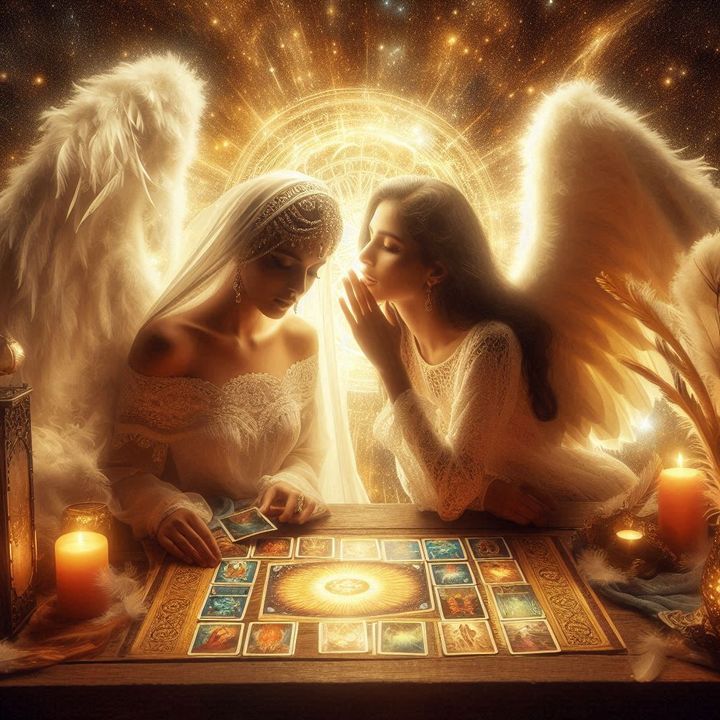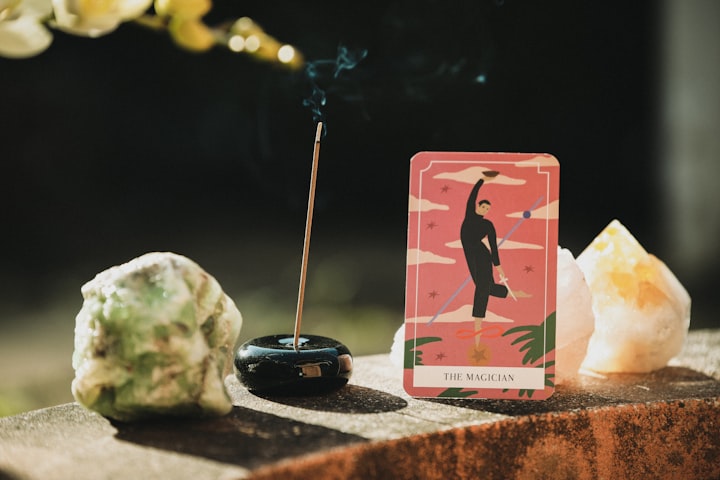Tracing the Arcana: The Fascinating History of Tarot Cards
Card playing is later translated into a divination tool, rebirth as tarot cards, and then oracle cards. Ancient countries such as China, Egypt, India, and Sri Lanka used these cards to give reading as well as do the healing.
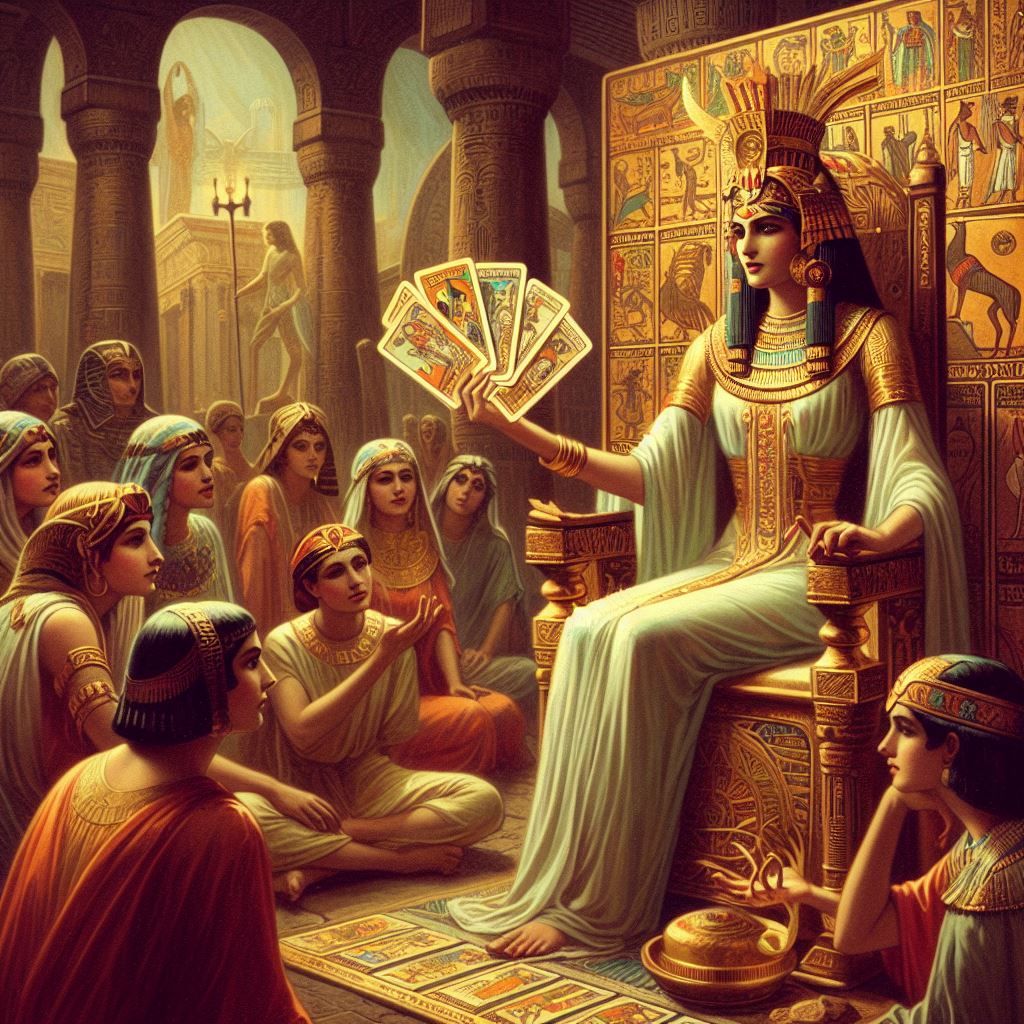
In the world of mysticism and divination, Tarot cards have long held a captivating allure, shrouded in an enchanting mystique. Tarot cards, a deck of 78 cards featuring intricate imagery and symbolism, have fascinated and intrigued people for centuries. In this exploration of the Tarot's rich history, we will delve into their origins, tracing them through time from their debated beginnings to their emergence in Renaissance Europe. We will uncover the dual nature of Tarot cards, once used for card games and gambling, now recognized for their role in unlocking the secrets of the future through divination. As we journey deeper, we will unravel the enigmatic connection between Tarot and the occult, where figures like Eliphas Levi and A.E. Waite breathed esoteric life into these cards.
The heart of our voyage lies in the Rider-Waite Tarot Deck, a masterpiece of symbolism and significance. We will also unravel Tarot's influence on popular culture and its modern-day revival in spirituality and self-discovery. Despite its enduring popularity, Tarot faces its share of controversies and scepticism, which we will explore, along with techniques and tips for those eager to embark on their Tarot journey. Join us as we trace the arcana of Tarot cards, a timeless and mysterious art, and discover the secrets they hold.
The Origins of Tarot Cards
The origins of Tarot cards have been a subject of debate among historians and scholars for many years. Some believe that they trace back to ancient Egypt, while others argue that they originated in medieval Europe. What we do know is that Tarot cards share a connection with playing cards, as they both have decks consisting of numbered cards and face cards. In fact, the Tarot deck evolved from the standard playing card deck in the 15th century, with the addition of 22 extra cards known as the Major Arcana. These extra cards brought a new layer of symbolism and meaning to the deck. Early historical references to Tarot-like decks can be found in documents from the 15th century, particularly in Italy.
One of the earliest known Tarot decks is the Visconti-Sforza Tarot, created in the 1450s for the Duke of Milan. This beautifully illustrated deck provides a glimpse into the Tarot's early history and its connection to noble families and aristocracy. As we explore further, we'll uncover how Tarot cards evolved from a simple card game to a powerful tool for divination and self-discovery, shaping their fascinating journey through the centuries.
Tarot in Renaissance Europe
During the Renaissance in Europe, tarot cards experienced a significant transformation and found their way into people's hearts. Tarot cards first emerged in the Italian city-states in the 15th century, where they were originally used as playing cards. The Tarot decks from this period were beautifully hand-painted and enjoyed by noble families and aristocrats as a form of entertainment. They were, in essence, a luxury item. These cards were often employed for card games and gambling, providing amusement and excitement at social gatherings.
However, as time passed, Tarot began to take on a deeper significance. It became associated with divination, a practice of seeking insight and guidance from the cards. This transition from mere games to mystical tools opened up a new chapter in the Tarot's history, where its symbolism and imagery started to be interpreted in profound and mystical ways. In the following sections, we will further explore this evolution and the Tarot's journey into the realms of the occult and esoteric practices, uncovering the fascinating stories behind this remarkable transformation.
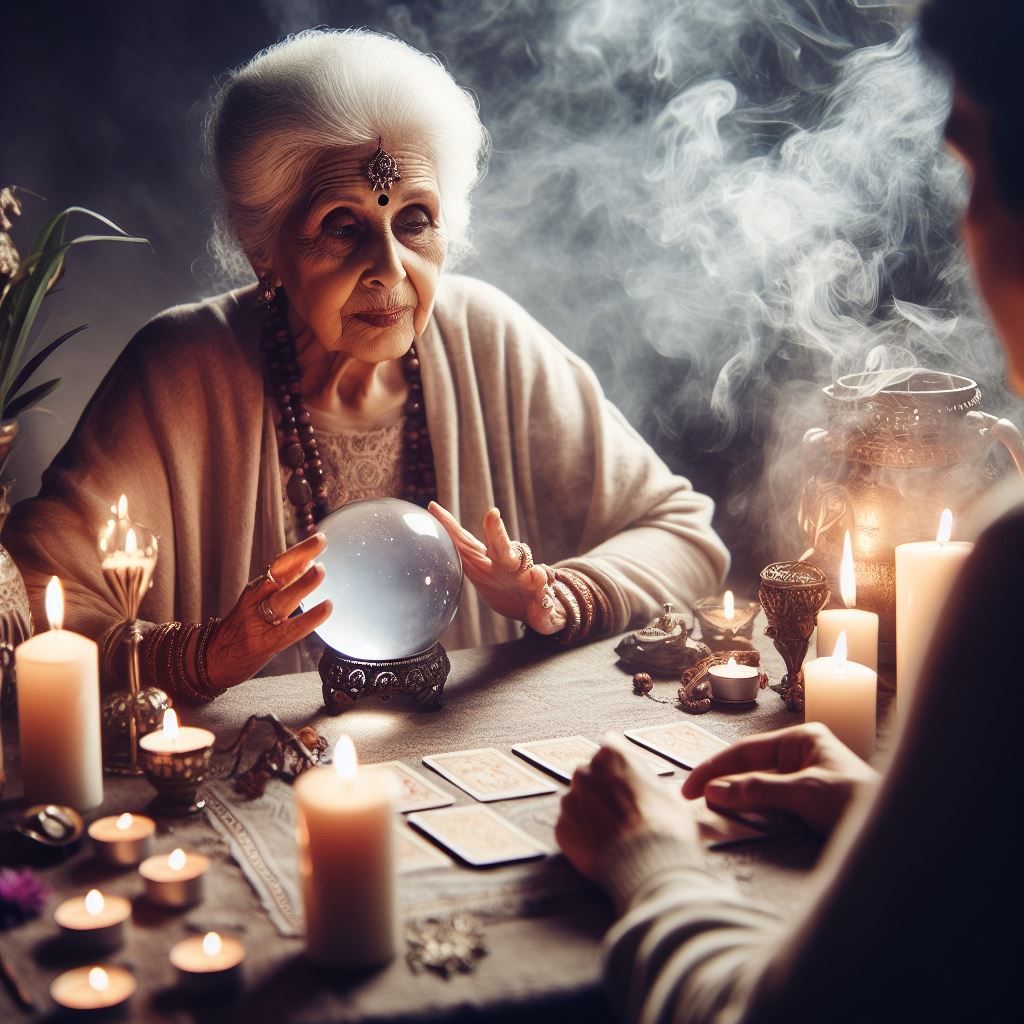
Tarot's Connection to Occult and Esoteric Practices
Tarot's connection to occult and esoteric practices deepened over time, gradually evolving from a simple card game into a mystical and spiritual tool. This transformation can be attributed to the influence of prominent figures like Eliphas Levi and A.E. Waite. Eliphas Levi, a French occultist in the 19th century, played a crucial role by incorporating Tarot into his magical teachings. He saw the Tarot as a representation of the mystical journey of the soul and emphasized its connection to the Kabbalah, a mystical Jewish tradition. A.E. Waite, a British occultist, further popularized Tarot's esoteric use with the Rider-Waite Tarot deck, published in 1910. This deck, with its rich symbolism and imagery, became a cornerstone for modern Tarot readings. The symbolism and imagery in.
Tarot cards are central to their mystical appeal. Each card carries its own unique symbols, colours, and meanings, often drawing from a mix of myth, religion, and alchemical traditions. For example, the High Priestess card represents intuition and the hidden realms, while the Death card symbolizes transformation and rebirth. These symbols serve as a language through which readers interpret and unlock the hidden wisdom contained within the cards. In the following sections, we will delve deeper into the secrets held by Tarot's symbolism and explore how these cards have continued to captivate and inspire seekers on their spiritual journeys.
The Rider-Waite Tarot Deck
The Rider-Waite Tarot deck, created in 1910 by A.E. Waite and illustrated by Pamela Colman Smith, holds a special place in the history of Tarot. Its significance lies in its role as a pioneering and influential deck that redefined Tarot imagery and symbolism. A.E. Waite, a British occultist, sought to make Tarot more accessible to a broader audience by commissioning Smith to illustrate the cards with clear and intuitive symbolism.
The Rider-Waite deck introduced innovative changes, such as giving more prominence to the images on the cards, making it easier for readers to connect with their meanings. This deck's popularity endures to this day because of its readability and its role in shaping modern Tarot interpretation. It has become the go-to deck for many beginners and seasoned readers alike. Some key cards from the Rider-Waite deck include the Fool, symbolizing new beginnings and adventure; the Lovers, representing love and choices; and the Tower, signifying unexpected change and upheaval.
The Rider-Waite Tarot continues to be a source of inspiration, offering a rich tapestry of symbolism that allows readers to explore the depths of their subconscious and gain insight into their lives. In the following sections, we will delve into more cards and their meanings, as well as the enduring legacy of this remarkable Tarot deck.
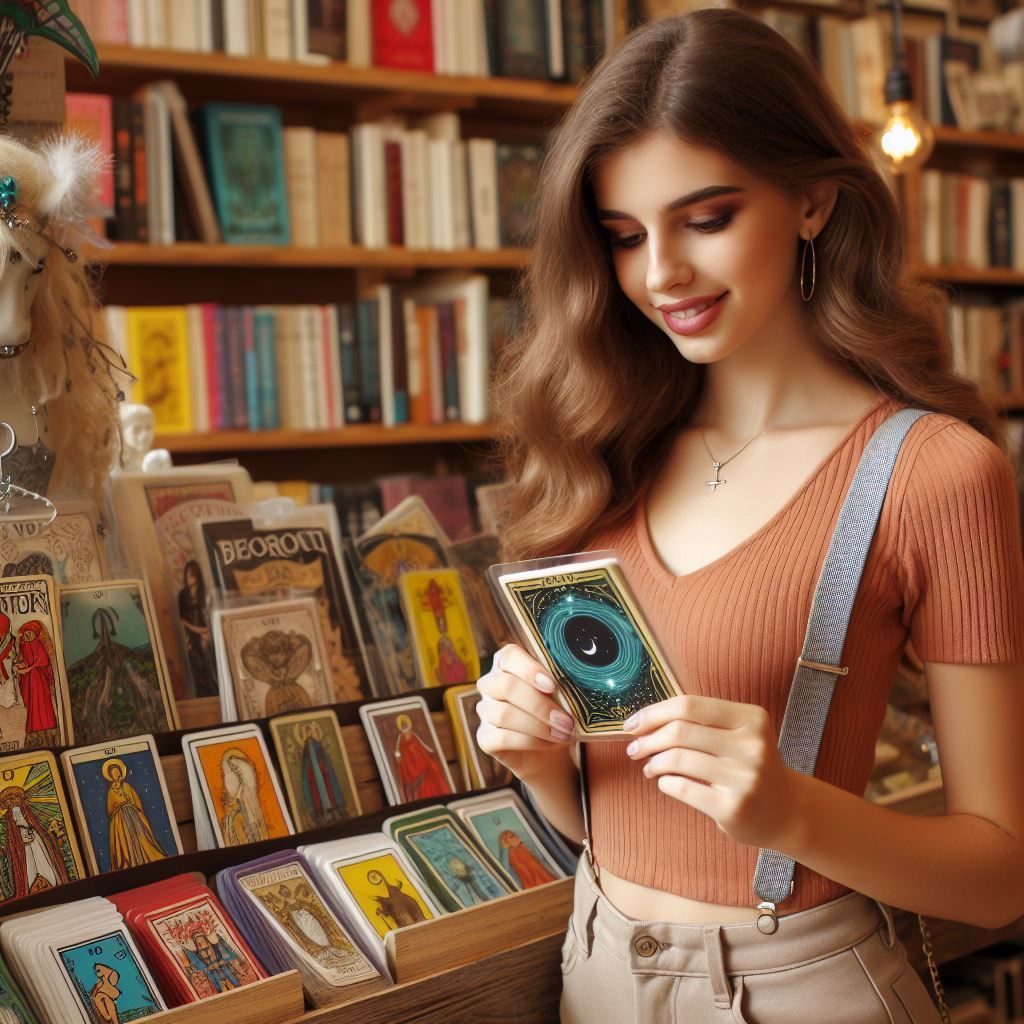
Tarot in Popular Culture
Tarot has ventured beyond mystics' chambers and into the realms of popular culture, leaving its mark on literature and film. In literature, Tarot cards have often been used as symbols of mystery and intrigue, appearing in works like "The Da Vinci Code" by Dan Brown and "The Hanged Man" by P.N. Elrod. In cinema, Tarot has made appearances in movies like "The Magician" and "Now You See Me," which adds an element of enchantment and suspense. Moreover, in modern-day spirituality, Tarot cards have found a renewed purpose as tools for introspection and guidance. Many individuals turn to Tarot Readings to gain insight into their lives, seek answers to pressing questions, or explore their spiritual paths. Tarot readers, both online and in person, offer their services to those seeking clarity and perspective.
Furthermore, Tarot has carved a niche in contemporary self-discovery and guidance. People use Tarot cards as a means of tapping into their intuition, understanding their emotions, and finding direction in their lives. It serves as a mirror to the soul, allowing individuals to explore their subconscious and gain a deeper understanding of themselves. As we venture further, we'll uncover the intricate ways in which Tarot has woven itself into the tapestry of popular culture, spirituality, and personal growth.
Controversies and Skepticism
Tarot, with its mystical allure, is not without its share of controversy and scepticism. Critics argue that Tarot readings lack empirical evidence and scientific basis, considering them as mere superstition or pseudoscience. From a psychological perspective, some suggest that Tarot's effectiveness may be attributed to the placebo effect, where people find meaning in the cards due to their own beliefs and interpretations.
However, Tarot enthusiasts and practitioners present counterarguments. They believe that tarot readings can be a valuable tool for self-reflection and personal growth, emphasizing that the cards serve as catalysts for meaningful introspection rather than predictive tools. Tarot readers often emphasize the importance of intuition and symbolism in their practice, arguing that these elements can provide valuable insights into one's subconscious mind. While controversies persist, Tarot remains a vibrant and evolving field, with enthusiasts and sceptics engaging in ongoing debates. As we continue our exploration, we'll uncover the nuances of these perspectives and the diverse ways in which Tarot is perceived and utilized by individuals around the world.
Tarot Reading and Interpretation
Tarot reading is an art that combines symbolism, intuition, and interpretation. Reading techniques vary among practitioners, but a common approach involves shuffling the cards while focusing on a question or issue. Cards are then drawn and placed in a spread, a specific layout that provides a framework for interpretation. Each card's meaning is influenced by its position in the spread and the surrounding cards. Card spreads play a significant role in Tarot readings. They can range from simple three-card spreads for quick insights to complex spreads like the Celtic Cross for more in-depth exploration. The choice of spread depends on the reader's intention and the complexity of the question.
Different spreads provide various perspectives and nuances to the reading, offering a comprehensive view of the situation. For beginners interested in Tarot, it's essential to start with a Rider-Waite or similar beginner-friendly deck. Familiarize yourself with the cards' meanings, symbolism, and imagery. Practice daily card draws to develop your intuition and understanding. Consider keeping a Tarot journal to record your readings, thoughts, and interpretations. It's also beneficial to explore Tarot books courses or join Tarot communities for guidance and support. Remember that Tarot is a personal journey, and there are no strict rules – trust your intuition, embrace your unique interpretations, and enjoy the mystical voyage of Tarot.
Conclusion
In summary, the historical journey of Tarot cards takes us from their mysterious origins through their evolution into tools of divination and their profound connection to the world of the occult. Tarot's enduring appeal lies in its ability to provide guidance, insight, and a glimpse into the human psyche. Despite scepticism and controversy, Tarot continues to captivate seekers, offering a path to self-discovery and personal growth. As we conclude, we're reminded of the timeless mystique that surrounds Tarot. Its allure remains as potent today as it was centuries ago, inviting us to explore the depths of our own consciousness and unravel the enigmatic threads of our existence through the captivating cards of the Tarot deck.
